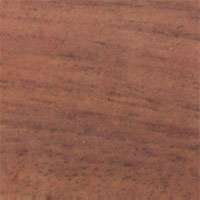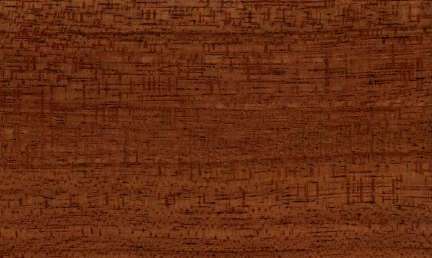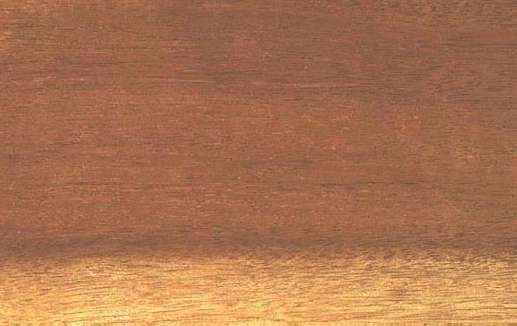  
African mahogany (Khaya anthotheca)
Family: Meliaceae
Common names: Acajou blanc, Acajou d'Afrique, Acajou krala, Acajou mangora, African mahogany, Ahafo, Ahafo mahogany, Ahafo timber, Akwantannuro, Anthotheca, Arwabotioro, Benin mahogany, Benin wood, Bie-eh-nasa, Diala, Dubini, Dukuma fufu, Dukuma-fufu, Funfun, Ghana mahogany, Grand Bassam mahogany, Heavy African mahogany, Ivory Coast mahogany, Khaya, Khaya mahogany, Kirumbo, Krala, Kruba, Krumben, Kwabaho, Kwabohori, Kwabohoro, Kwantannuro, Lagos wood, Lpaki, Lra, Mangona, Mpohe, Munyama, Ngollon, Nigerian mahogany, Odupon, Ogigedu, Ogwango, Ogwango nofuwa, Red mahogany, Smooth barked African mahogany, Uganda mahogany, White mahogany
Distributed in: Angola, Benin, Burkina Faso, Cameroon, Central African Republic, Chad, Congo, Equatorial Guinea, Gabon, Gambia, Ghana, Guinea, Ivory Coast, Liberia, Mali, Niger, Nigeria, Senegal, Sierra Leone, Sudan, Togo, Uganda (Africa)
Distribution overview: Angola, Cameroon, Congo, Cd'Ivoire, DR Congo, Ghana, Liberia, Malawi, Mozambique, Nigeria, Sierra Leone, Tanzania, Uganda, Zambia and Zimbabwe. The species occurs in lowland evergreen forest.
Common uses: Boat building (general), Boat building, Boat building: decking, Boat building: planking, Cabinetmaking, Carvings, Decorative veneer, Flooring, Furniture , Furniture, Interior construction, Joinery, Light construction, Marine construction, Millwork, Moldings, Musical instruments, Paneling , Paneling, Plywood, Pulp/Paper products, Sporting Goods, Tables, Tool handles, Turnery, Vehicle parts, Veneer, Veneer: decorative
Product sources: This species is usually marketed together with other very similar Khaya species as African mahogany. They are readily available in a wide range of sizes at a moderate price. The material is also obtainable in the form of plywood from many suppliers.About 18500 cubic feet (500 cubic met.) per week supply of Khaya anthotheca is available from sustainably managed sources in Africa.
Environment profile: Secure in many areas of its range
Tree size: Trunk diameter is 300-350 cm
Colors: the heart isTurn reddish brown upon exposure, Yellowand the sapwoodWhite to yellow, Yellow.The grain isWavy, the textureVariableand the lusterNatural luster
Natural durability: Susceptible to insect attack, Susceptible to marine borer attack
Odor: No specific smell or taste
LightInduced Color Change: Darker
Kiln Schedules: Kiln Drying Rate (in days) is fairly rapid
Kiln Drying Rate: Slow
Drying Defects: Slight twist/warp, Splitting
Ease of Drying: Variable results.
Tree Identification: Bole/stem form is straight
Comments: Abnormal Growth Defects - Brittleheart is present in some logs, producing compression failures in the form of thunder shakes, cross-breaks, heart-breaks, etc. The defect is more prevalent in figured logs. Logs may also contain abnormal wood tissue in the form of tension wood.African mahogany is described as a timber with medium density and a pleasing appearance. It has good machining qualities and high dimensional stability, and is highly favored in the furniture industry for a wide variety of applications. It is also used for boat building, and is suitable for almost all parts of boats. The timber is suitable for almost all applications where a good quality, medium weight hardwood is required.General finishing qualities are rated as good
Blunting Effect: Moderate effect
Boring: Fairly easy to very easy
Carving: Fairly Difficult to Very Difficult
Cutting Resistance: Moderate to saw
Gluing: Glues well
Mortising: Very Good to Excellent
Moulding: Fairly Difficult to Very Difficult
Movement in Service: Fairly Difficult to Very Difficult
Nailing: Pre-Boring Recommended, Satisfactory nailing properties
Planing: Very Good to Excellent
Resistance to Impregnation: Resistant sapwood
Response to hand tools: Variable qualities
Sanding: Very Good to Excellent Results
Veneering qualities: Suitable for slicing, There is slight to moderate drying degrade and the potential for buckles and splits
Steam bending: Very poor
Screwing: Easy to screw, Pre-boring recommended; Turning: Poor to Very Poor Results
Polishing: Very Good to Excellent; Staining: Very Good to Excellent;
- Numerical data Metric
- Numerical data English
- Strength properties
- References
 |
 |
 |
 |
| Item |
Green |
Dry |
Metric |
| Specific Gravity |
0,4 |
|
|
| Density |
|
512 |
kg/m3 |
| Bending Strength |
570 |
862 |
kg/cm2 |
| Crushing Strength |
260 |
434 |
kg/cm2 |
| Hardness |
|
416 |
kg |
| Impact Strength |
63 |
60 |
cm |
| Shearing Strength |
|
119 |
kg/cm2 |
| Stiffness |
81 |
96 |
1000 kg/cm2 |
| Tangential Shrinkage |
6 |
|
% |
| Radial Shrinkage |
3 |
|
% |
| Weight |
512 |
496 |
kg/m3 |
| Maximum Load |
0,49 |
0,56 |
cm-kg/cm3 |
| Toughness |
|
|
cm-kg |
| Static Bending |
|
|
kg/cm2 |
|
 |  |  |  | | Item | Green | Dry | English | | Bending Strength | 8120 | 12265 | psi | | Density | | 32 | lbs/ft3 | | Hardness | | 918 | lbs | | Impact Strength | 25 | 24 | inches | | Maximum Crushing Strength | 3712 | 6185 | psi | | Shearing Strength | | 1693 | psi | | Stiffness | 1162 | 1377 | 1000 psi | | Work to Maximum Load | 7 | 8 | inch-lbs/in3 | | Specific Gravity | 0.4 | | | | Weight | 32 | 31 | lbs/ft3 | | Radial Shrinkage | 3 | | % | | Tangential Shrinkage | 6 | | % | | Volumetric Shrinkage | 11 | | % | |
Density (dry weight) = 31-37 lbs/cu. ft. 0
Max. crushing strength = medium 0
Hardness (side grain) = soft 0
Modulus of Elasticity (stiffness) = very low 0
Bending strength (MOR) = low 0
Shearing strength (parallel to grain) = low 1
Bending strength (MOR) = medium 1
Shrinkage, Tangential = small
Shrinkage, Radial = small
Modulus of Elasticity (stiffness) = low
Density (dry weight) = 38-45 lbs/cu. ft.
Density (dry weight) = 23-30 lbs/cu. ft.
Toughness-Hammer drop (Impact Strength) = low
Shrinkage, Volumetric = moderate
Shrinkage, Radial = very small
Max. crushing strength = low
Work to Maximum Load = very low
Shrinkage, Tangential = moderate
Toughness-Hammer drop (Impact Strength) = very low
Shrinkage, Radial = moderate
Shearing strength (parallel to grain) = medium
Hardness (side grain) = very soft
Bending strength (MOR) = high
Shrinkage, Volumetric = small
Shrinkage, Volumetric = fairly large
Shrinkage, Tangential = very small
Shrinkage, Tangential = large
Shrinkage, Tangential = fairly large
Shrinkage, Radial = large
Shrinkage, Radial = fairly large
Medium weight and density
Hardness = medium
Compression strength (parallel to grain) = medium
Bending strength (MOR) = very high
Comparable to Teak. It is lower in compression strength and maximum crushing strength than teak. It resists denting and marring about as well as white oak or birch
Banks, C.H., Schoeman, J.P., Otto, K.P.,1977,The Mechanical Properties of Timbers with particular reference to South,Africa,South African Forestry Research Institute Bulletin,(Ed.,Schoeman, J.P. 1973 & Otto K.P. 1976,No.48Banks, C.H.,1954,The Mechanical Properties of Timbers with Particular Reference to those,grown in the Union of South Africa,Journal of the South African Forestry Association,No. 24 pp.44-65,[South,African Forestry Journal]Bhat, R.V.,1970,Pulping of Tropical Hardwoods,Indian Pulp and Paper Technology Association IPPTA,7(3,pp203-214Bois et Forets des Tropiques,1979,Acajou D'Afrique (Khaya spp.,Bois et Forets des Tropiques,183,pp33-48Bolza, E., Keating, W.G.,1972,African Timbers - the Properties, Uses and Characteristics of 700 Species,C.S.I.R.O. Div. of Building ResearchBolza, E.,1976,Timber and Health,Div. Building Res. C.S.I.R.O. AustraliaBoone, R.S., C.J. Kozlik, P.J. Bois and E.M. Wengert. 1988. Dry Kiln Schedules for Commercial Woods: Temperate and Tropical. United States Department of Agriculture, Forest Service, General Technical Report FPL-GTR-57, Forest Products Laboratory, Madison, Wisconsin.Brown, W.H.,1969,Properties and uses of Tropical hardwoods in the United Kingdom. Part 1,Nonstructural properties and uses.,Conference on Tropical hardwoods SC-5/TN-5, Syracuse UniversityBrown, W.H.,1978,Timbers of the World No.1 Africa,TRADA, Red Booklet SeriesChudnoff, M.,1984,Tropical Timbers of the World,U.S.A. Department of Agriculture, Forest Service, Forest Products,Laboratory, Madison.Cox, H.A.,1939,A Handbook of Empire Timbers,Forest Products Research Laboratory, Princes RisboroughEggeling, W.J., Harris, C.M.,1939,Fifteen Uganda Timbers,Forest Trees and Timbers of the British Empire, Imperial Forestry,Institute, Oxford,Part 4Eggeling, W.J.,1940,Indigenous Trees of Uganda,Govt. Printer Entebbe UgandaErfurth, T., Rusche, H.,1976,The Marketing of Tropical Wood A. Wood Species from African Moist Forests,F.A.O. Forestry DepartmentFarmer, R.H.,1972,Handbook of Hardwoods,HMSOFlynn Jr., J.H., Editor. 1994. A Guide to Useful Wood of the World.Arno, J., Flynn Jr., J.H., and Kline, M., Contributors. King Philip Publishing Co., Portland, Maine.Forest Products Research Laboratory, U.K.,1945,A Handbook of Empire Timbers,Department of Scientific and Industrial Research Forest Products ResearchForest Products Research Laboratory, U.K.,1967,The Steam Bending Properties of various timbers,Forest Products Research Laboratory, Princes Risborough, Leaflet,No.45France - C.T.F.T.,1966,Bois Tropicaux,C.T.F.T. Publ.,12France - C.T.F.T.,1973,Investigations and Tests carried out on Tropical Timber by several,Research Laboratories,CTFTFrance - C.T.F.T.,Recuil de Fiches Techniques,C.T.F.T.France - Comite Nacional des Bois Coloniaux,1931,Etude Physique et Mecanique des Bois Coloniaux,Assoc. Colonies-Sciences & Comite National des Bios Coloniaux, Paris,,FranceGhana - Timber Marketing Board,1969,Ghana Hardwoods,Timber Marketing BoardGreenway, P.J.,1947,Mahogany in East Africa 1 The Khayas,East African Agricultural Journal,13,pp8-14,[East African Agricultural,and Forestry Journal]Hedin, L.,1930,Commercial Mahoganies of French Cameroons,Tropical Woods,3(21,pp1-5Hedin, L.,1930,Etude sur la Foret et les Bois du Cameroun,Haut-Commissaire de la CamerounHMSO. 1981. Handbook of Hardwoods, 2nd Edition. Revised by R.H. Farmer. Department of the Environment, Building Research Establishment, Princes Risborough Laboratory, Princes Risborough, Aylesbury, Buckinghamshire.Howard, A.L.,1948,A Manual of Timbers of the World.,Macmillan & Co. Ltd. London 3rd ed.Hughes, J.F.,1971,The Principal Timber Trees of Cameroon,Unpublished dataI.U.F.R.O.,1973,Veneer Species of the World,Assembled at F.P.L. Madison on behalf of I.U.F.R.O. Working Party on,Slicing and Veneer CuttingIrvine, F.R.,1961,Woody Plants of Ghana,O.U.P. LondonITTO. 1986. Tropical Timber Atlas, Volume 1 - Africa. Prepared for International Tropical Timber Organization (ITTO) by Centre Technique Forestier Tropical (CTFT, Division of CIRAD, 45bis, Avenue de la Belle Gabrielle, Nogent-sur-Marne Cedex, France.Keay, R.W.J.1989. Trees of Nigeria.Revised Version of Nigerian Trees. Clarendon Press, Oxford.Keay, R.W.J.,1964,Nigerian Trees Vol.2,Nigeria Federal Department of Forest Research, IbadanKinloch, D., Miller, W.A.,1949,Gold Coast Timbers,Govt. Printer Gold CoastKryn, J.M., Forbes, E.W.,1959,The Woods of Liberia,U.S.A. Department of Agriculture,Forest Products Laboratory, Madison,,Report No. 2159Kunkel, G.,1965,The Trees of Liberia,German Forestry Mission to Liberia Report,No.3Lavers, G.M. 1967. The Strength Properties of Timbers. Forest Products Research Bulletin, No. 50 (Spersedes Bulletin No. 45). Ministry of Technology, Her Majesty's Stationery Office, London.Lavers, G.M.,1983,The Strength Properties of Timber (3rd ed. revised Moore G.L.,Forest Products Research Laboratory, Princes Risborough, Building Research,Establishment Report (formerly Bulletin No.50)Lincoln, W.A. 1986. World Woods in Color. Linden Publishing Co. Inc. Fresno, California.Normand, D., Sallenave, P.,1958,Characteristiques et Proprietes des Acajous,Bois et Forets des Tropiques,59,pp43-52Patterson, D.N.,1963,The strength of Kenya timbers, their derivation and application,Kenya Forestry Department Research Bulletin,No.23Pieters, A.,1977,Essences Forestieres du Zaire,R.U.G. Gent BelguimRio Rivuma. 1995. Khaya anthotheca - Potential Commercial Species from the Zaire Basin System. Rio Rivuma, 229 A Street, Boston, MA.Sallenave, P.,1955,Proprietes Phyiques et Mecaniques des Bois Tropicaux de l'Union Francaise,C.T.F.TSavill, P.S., Fox, J.E.D.,1967,Trees of Sierra LeoneSpalt, H.A., Stern, W.L.,1956,Survey of African woods 1,Tropical Woods,115(105,pp 13-38Spalt, H.A., Stern, W.L.,1957,Survey of Africa Woods 3,Tropical Woods 16(107) pp92-128Streets, R.J.,1962,Exotic Forest Trees in the British Commonwealth,Clarendon Press OxfordTack, C.H.,1953,Plywood and veneer species,Forest Department, Uganda. Technical Note 5/1953Tack, C.H.,1969,Uganda Timbers,Govt. Printer UgandaTailfer, Y.,1972,Les Acajous de la Foret Dense Zairoise leur Identification Forestiere,Musee Royale de L'Afrique Centrale Sciences EconoTaylor, C.J.,1960,Synecology and Silviculture in Ghana,University College of Ghana Thomas Nelson and SonsTimber Development Association,1948,Some New Timbers and Their Uses No. 34,Timber Development Association Limited, London [TRADA]Titmuss, F.H. 1965. Commercial Timbers of the World. Third Edition (Enlarged of A Concise Encyclopedia of World Timbers). The Technical Press Ltd., London.Titmuss, F.H.,1965,Commercial Timbers of the World,Technical Press Ltd., London, 3rd editionU.K. - Colonial Forest Resources Development Department,1939,British Colonial Timbers - Woods recommended for Various Uses,Colonial Forest Resources Development Department,LondonU.S.D.A. Forest Service,1974,Wood Handbook,U.S.A. Department of Agriculture, Forest Service Handbook,72Uganda Forest Department,1934,Uganda Mahogany (Khaya anthotheca,Uganda Forestry DepartmentUganda Forest Department,1954,Khaya anthotheca,Uganda Forestry Department, Timber Leaflet, No.13Uganda Forest Department,1954,The Mechanical Properties of some Ugandan Timbers,Uganda Forest Department Timber Leaflet,No.1Uganda Forest Department,1969,The Shrinkage of Some Ugandan Timbers,Uganda Forestry Department Timber Leaflet,No.47Unwin, A.H.,1920,West African Forests and Forestry,T. Fisher Unwin Ltd. LondonVoorhoeve, A.G.,1965,Liberian High Forest Trees,Centre for Agric. Publishing and Documentation, WageningenWCMC. 1992. Conservation Status Listing: Trees and Timbers of the World. World Conservation Monitoring Center (WCMC, Plants Program, 219 Huntingdon Road, Cambridge, CB3 ODL, United Kingdom.
|










